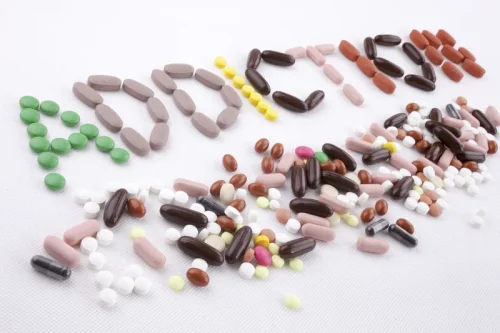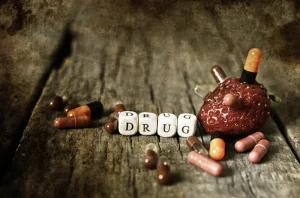
Following institutional ethical approval we undertook qualitative, in-depth semi-structured individual interviews and household focus groups with current UK adult drinkers. Between May and August 2020, we recruited a convenience sample via https://ecosoberhouse.com/ institutional email (staff and university students) and social media recruitment drives (wider community). A total of 20 UK-based participants were included, ranging in age from 26 to 65 from varied backgrounds and diverse occupations.

Heavy drinking sessions
The current review highlights a notable gap in research empirically evaluating the effectiveness of nonabstinence approaches for DUD treatment. While multiple harm reduction-focused treatments for AUD have strong empirical support, there is very little research testing models of nonabstinence treatment for drug use. Despite compatibility with harm reduction in established SUD treatment models such as MI and RP, there is a dearth of evidence testing these as standalone treatments for helping patients achieve nonabstinence goals; this is especially true regarding DUD (vs. AUD). In sum, the current body of literature reflects multiple well-studied nonabstinence approaches for treating AUD and exceedingly little research testing nonabstinence treatments for drug use problems, representing a notable gap in the literature. As researchers concerned with questions around moderate/lighter drinking and lifestyle choices involving alcohol abstinence and sobriety, we are currently undertaking new primary research exploring the relationships between lockdown and drinking practices. This research was designed to explore evidence of potentially heavier consumption patterns but we also sought to identify and understand implications for lighter drinking choices and/or aspirations, where apparent.

Associations between substance use status and individual characteristics
To account for the differences in alcohol content of different alcoholic drinks (e.g., beer, wine, spirits), this is reported in liters of pure alcohol per year. As authors point out, all groups improved to varying degrees particularly in terms of fewer drinks per drinking day, despite the fact that new skills to reduce or abstain were not an explicit part of any of the three treatments in the initial randomized trial. These individuals may be naturally finding ways in their environment to help them reduce or abstain (e.g., seeking social support), for example, or automatically using cognitive strategies to help them stick to limits on days they drink. Individuals confident in their ability to reduce heavy drinking are most likely to respond well to a moderation-focused treatment and, as authors point out, they may be more willing to try abstaining on certain days to reach their overall moderation goal.
Support Children’s Health
For example, at a large outpatient SUD treatment center in Amsterdam, goal-aligned treatment for drug and alcohol use involves a version of harm reduction psychotherapy that integrates MI and CBT approaches, and focuses on motivational enhancement, self-control training, and relapse prevention (Schippers & Nelissen, 2006). Participants with controlled use goals in this center are typically able to achieve less problematic (38%) or non-problematic (32%) use, while a minority achieve abstinence with (8%) or without (6%) incidental relapse (outcomes were not separately assessed for those with AUD vs. DUD; Schippers & Nelissen, 2006). Despite the growth of the harm reduction movement globally, research and implementation of nonabstinence treatment in the U.S. has lagged. Furthermore, abstinence remains a gold standard treatment outcome in pharmacotherapy research for drug use disorders, even after numerous calls for alternative metrics of success (Volkow, 2020). Models of nonabstinence psychosocial treatment for drug use have been developed and promoted by practitioners, but little empirical research has tested their effectiveness.
Alcohol Moderation Management Programs
Data collection methods included 12 internet-mediated interviews and 4 household focus groups (each with 2 participants) dependant on participant preference. A standard interview schedule was used for both interviews and focus groups which comprised alcohol abstinence vs moderation of sections concerning socialising and alcohol consumption pre-pandemic and during the initial period of ‘lockdown’. Formal analysis is currently underway, but we are in a position to reflect on emerging themes and trends arising from our data.
Written by Thrivalist Sobriety
You can have an occasional drink without feeling defeated and sliding deeper into a relapse. Alcohol consumption is a known risk factor for a number of health conditions, and potential mortality cases. Alcohol consumption has a causal impact on more than 200 health conditions (diseases and injuries). The Institute for Health Metrics and Evaluation (IHME), in its Global Burden of Disease study, provides estimates of the number of deaths attributed to the range of risk factors.5 In the visualization, we see the number of deaths per year attributed to each risk factor. This chart is shown for the global total but can be explored for any country or region using the “Change country or region” toggle.

Abstinence Or Moderation: Is There A Correct Choice?
However, if you find yourself struggling with regulating how much alcohol you drink in a day or week, an abstinence-based approach may be necessary for changing your drinking habits. To evaluate this question, it’s important to recognize that alcohol use disorder (AUD) is diagnosed on a spectrum, and can be addressed in different ways depending on the individual. While working with a clinician is the best way to determine what goals and treatment approach is appropriate for you and your medical history, here are some useful pointers to consider when reflecting on the question of abstinence vs. drinking in moderation. What we know is that after one has developed a severe addiction, the simplest, easiest, safest and surest way to keep from repeating past behaviors is total abstinence. This is not to say one may not go thorough a period of “day at a time,” or “week at a time,” or even try a “harm reduction” approach. Still, if you want the easiest way to minimize the problems in your life, go for abstinence eventually.
Is Moderate Drinking Possible for People With Alcohol Use Disorder?
- For example, in one study testing the predictive validity of a measure of treatment readiness among non-treatment-seeking people who use drugs, the authors found that the only item in their measure that significantly predicted future treatment entry was motivation to quit using (Neff & Zule, 2002).
- Alcohol is toxic to our body, and major health authorities such as the World Health Organizations (WHO) hold that no amount of alcohol is safe.
- It is also worth mentioning some baseline (i.e., pre-treatment) differences between the three groups to get a sense of the types of individuals in each group.
The results of the Sobell’s studies challenged the prevailing understanding of abstinence as the only acceptable outcome for SUD treatment and raised a number of conceptual and methodological issues (e.g., the Sobell’s liberal definition of controlled drinking; see McCrady, 1985). A “controlled drinking controversy” followed, in which the Sobells as well as those who supported them were publicly criticized due to their claims about controlled drinking, and the validity of their research called into question (Blume, 2012; Pendery, Maltzman, & West, 1982). Despite the intense controversy, the Sobell’s high-profile research paved the way for additional studies of nonabstinence treatment for AUD in the 1980s and later (Blume, 2012; Sobell & Sobell, 1995). Marlatt, in particular, became well known for developing nonabstinence treatments, such as BASICS for college drinking (Marlatt et al., 1998) and Relapse Prevention (Marlatt & Gordon, 1985).
Treatment providers are available 24/7 to answer your questions about rehab, whether it’s for you or a loved one. While it can seem daunting to practice abstinence, limit your alcohol use, or seek treatment, you can find comfort in the fact that there is no definitive “correct” way to get where you want to be. First, let’s dive into the difference between abstinence (AKA sobriety) and moderation. The consequences of using should be remembered, not with a guilty conscience, but in a realistic portrayal of why you have chosen sobriety.

